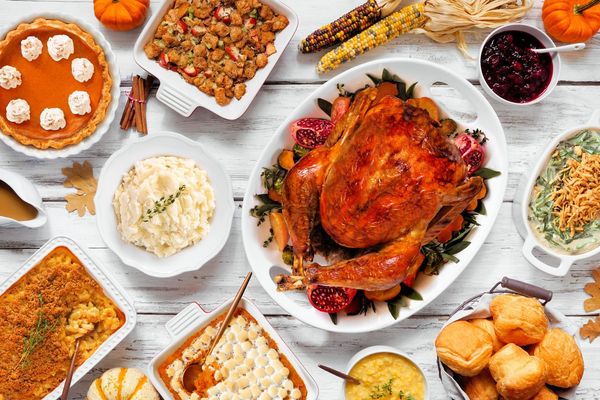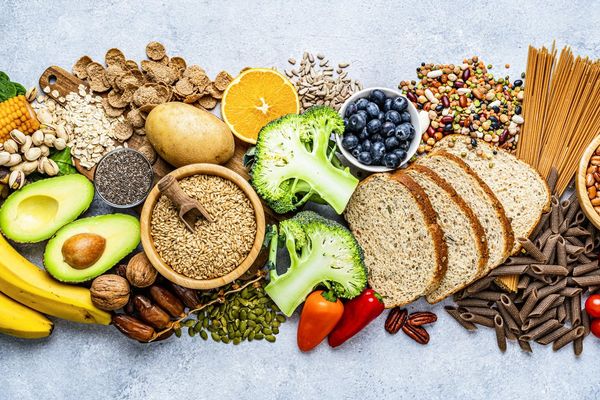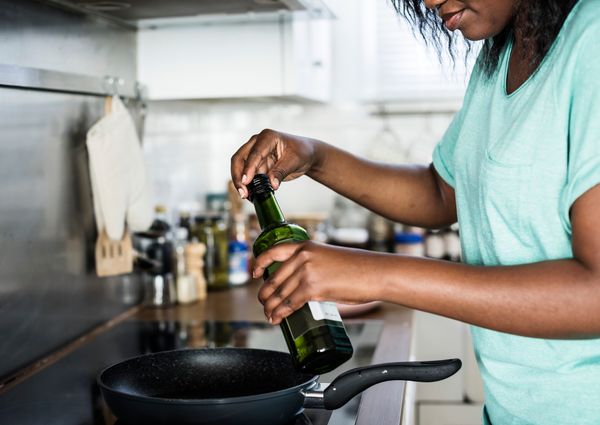My recent trip to Pritikin was eye-opening in so many ways. It got me on the track to better health. I became a detective about my hidden salt intake. And so far, so good. I'm not taking my blood pressure meds (and my numbers are good!) and I've managed to take off those extra unwanted pounds that had settled around my middle. (Fat, be gone!)
I've learned new ways to eat and season my food so that it's still enjoyable. Okay, I'll admit I miss certain things, but hey, good health does involve some sacrifice, after all. And I'm still continuing to work exercise into my life as often as possible, maybe even stepping up my routine a bit.
But the most eye-opening experience and best take-home experience, in so many ways, was the trip we took to the grocery store. It came toward the end of my visit after we'd learned about health issues as they relate to our diets. Yup, that was my big night out – a trip to the supermarket (I even put on lipstick for the occasion). Believe it or not, I was really excited – and this is coming from a person who absolutely abhors food shopping. But here was an opportunity to comb the aisles of the supermarket with a knowledgeable nutritionist/dietitian by our side, and get her expert advice on those tiny little numbers that throw most of us off. I was constantly flummoxed by reading nutrition labels. I thought I knew a little – but boy, was I clueless.
It was a strange sensation, walking into that supermarket. I was suddenly hyper-aware of packages; their loud colors, bold claims, the way they were strategically arranged on the shelves to allow for maximum exposure. The overhead lights were bright, even glaring; junk food piled high on just about every corner of each aisle. And the healthy foods? Most of the time, they were relegated to the lower shelves – more difficult to find – with the more popular (i.e., unhealthy) brands enjoying their top-shelf status.
How to make sense of it all? Here are some helpful tips. Please remember that some of the numbers suggested below are Pritikin's guidelines for healthful eating. Your needs may be different, but I think these are great and easy ways to decode the confusing nature of nutrition labels.
1. Never believe the front of the box. Those claims of "Low-fat!" "All natural!" or "Light!" are all relative. They're not health claims, but instead, marketing pitches. Many companies do this to get you to buy the product based on the latest health craze, like low-fat eating. Maybe it is low in fat, but what you may not know is that the flavor lost by doing lowering the fat is made up for with a LOT of added sugar.
2. Always read the Nutrition Facts label and the Ingredient List. Again, the front of the box does not tell the whole story (at least not the accurate story). Maybe a box of crackers says "Trans fat free." Good, right? Wrong. That claim doesn't mean there are no fats: there could still be unhealthy fats, like palm or coconut oil, which are just as harmful to your arteries as the evil trans fats that they replace.
By now, you're probably good and mad, maybe scratching your head as to why there is no regulation to stop food manufacturers from making these claims. I say, onward! (I get mad, too, but have never been much of an activist. So I'm not gonna write about how to fight the government on this). Arm yourself with some defensive knowledge instead:
3. Check the serving size & calories per serving. So many times the numbers represent a serving size that is much smaller than youd eat – never mind a very unrealistic portion. Very surprising fact: A serving of fat-free cooking spray is .25 grams – which represents 1/3-of a second spray. Huh? Whose finger is that nimble to spray that fast? (And how much of the pan does such a quick spray really cover, anyway?)
I learned about serving sizes the hard way, a while back, when I thought I was eating a low-calorie muffin every morning for breakfast. I saw 150 calories on the label and thought: great! I can eat the whole thing for only 150 calories – what a find! Wrong. A few dozen muffins later, a closer look at the label led me to the discovery (gasp!) that the calorie count represented only HALF a muffin, not the whole thing.
Ah, the games the food manufacturers play.
4. Check the calories from fat. Look at the calorie count and then glance over to the "calories from fat" (usually on the same line, to the right). You have to do a little math here (that number doesn't tell you the "percent of calories from fat," but I know you can figure that out easily). Here are a few options:
- Divide the number of calories from fat by the total calories. (If the serving is 150 calories, 50 of which are fat, then your product is 33% calories from fat.)
- Look at the total calories, and make sure the calories from fat does not exceed 20 percent (those are Pritikin's guidelines; yours may be more or less). Using the 20 percent guideline, if a serving is 150 calories, the fat grams should not exceed 30 grams.
5. Check the sodium. You may not be looking to keep your sodium as low as me, for instance, but this is a good guideline, nonetheless. (If you look at the percentage of Daily Value – DV – of sodium, remember this: it's based on government standards, which may be too high for some). Look at the calories, then look at the sodium. Ideally, it should be a 1:1 ratio. So, for 150 calories, the sodium should not exceed 150 mg.
There are some exceptions, with condiments like hot sauces, barbecue sauces and salsa, Pritikin says. With these, there should be a minimum of 4 mg of sodium per calorie.
6. Sugar… is sugar… is sugar. The label might not say "sugar," but it still acts like sugar. It's also known as: corn syrup, sorghum, rice and maple syrup, molasses, honey, malted barley, barley malt – or any term ending in "ol" (sorbitol or malititol) or "ose" (dextrose, glucose, fructose).
7. Make sure that grains are WHOLE grains. Maybe your bread or pasta says it’s "whole wheat." Sounds healthy…until you realize that the first ingredient in the ingredient list says "wheat flour," which is actually refined flour. Whole-wheat flour or bran might be on the list, but further down, which means the product is not primarily whole grain. (Ingredients are listed in the order in which they appear in the food; so the first ingredient is the most prominent and plentiful ingredient).
Something else that fools many people is the word "Multi-grain." Oh good, you may think, it has a lot of grains. But those grains are not necessarily "WHOLE" grains, which leads to nothing more than a lot of refined grains.
This Matters> The next time you go shopping, set aside a bit more time than usual. It takes careful consideration to find the healthier choices, but after you've done the initial sleuthing, your future trips to the supermarket should be easier and faster.
And I promise, if I run into you, I'll be glad to help.
You might also want to read: Foods for Healthy Aging.







